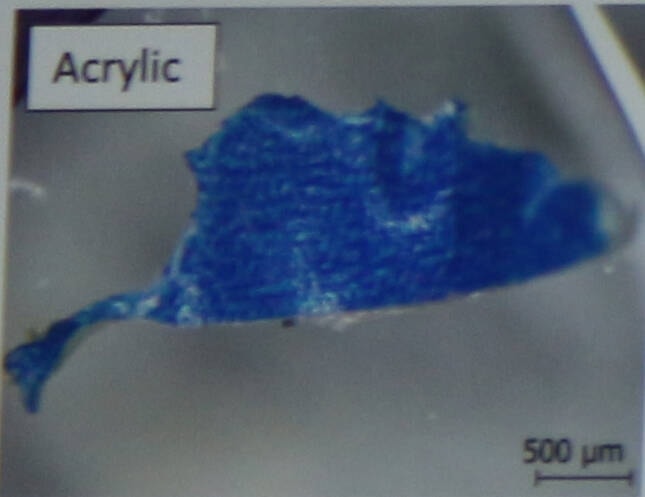We know microplastics are accumulating in the north, but where are they coming from?
Carleton University researcher Madeline Bourdages intends to find out.
SA����Ӱ�Ӵ�ý�The objectives of my project are to quantify and characterize microplastics in water sediments,SA����Ӱ�Ӵ�ý� she said. SA����Ӱ�Ӵ�ý�So Arctic freshwater environments SA����Ӱ�Ӵ�ý� specifically Great Slave Lake and the Mackenzie River SA����Ӱ�Ӵ�ý� then to better understand the different sources of microplastics.SA����Ӱ�Ӵ�ý�
Bourdages was discussing her work during the first in-person Aurora Speaker Series July 28. The speaker series helps the Aurora Research Institute communicate its work to those outside its labs in Inuvik.
As microplastics are being found in the stomach contents of animals as large as beluga whales in the Beaufort Sea, Bourdages is particularly interested in seeing just how far up the Mackenzie River these pollutants are coming from.
The first consideration is whether they could be originating in Yellowknife, the largest plastic user on the waterway. Bourdages said she sampled water from Great Slave Lake earlier in the summer and has since visited Fort Providence to sample water flowing into the Mackenzie River.
SheSA����Ӱ�Ӵ�ý�s now in the process of collecting samples from the Inuvik area to find out how much of the unwanted material is making its way to the Arctic ocean. To achieve this, she uses a device known as a Manta Trawl to collect water samples, and a set of metal jaws called an Ekman Grab, to collect sediment samples. Samples are gathered from sites all along the Mackenzie Delta, from Tsiigehtchic to the opening of the Beaufort Sea at Tuktoyaktuk. Once theySA����Ӱ�Ӵ�ý�re collected, they undergo a process of chemical and physical filtering to strip them of all micro organisms, nutrients and anything that isnSA����Ӱ�Ӵ�ý�t a microplastic.
SA����Ӱ�Ӵ�ý�Typically if thereSA����Ӱ�Ӵ�ý�s a lot of organic material in the sample, especially a lot of mass in the river or lake we do chemical digestion,SA����Ӱ�Ӵ�ý� she said. SA����Ӱ�Ӵ�ý�So with water we tend to add peroxide and heat it up a little bit and want to make sure that weSA����Ӱ�Ӵ�ý�re not damaging our samples.
Once she has enough samples to collect good data, the water is analyzed for different types of microplastics, to see if there are any matches between the two areas. Bourdages is also looking at concentrations of each type found in each area. Microplastics are classified based on their shape and colour and are detected using spectroscopes and microscopes. They show up in different shapes including fibres, fragments, film and foam. And they vary in colour SA����Ӱ�Ӵ�ý� blue is the most common.
Microplastics are the catch-all term for any piece of plastic residue that measures 5 millimetres or less. As plastic items break down, tiny components make their way into the ecosystem. They come from obvious sources like discarded plastic bottles and packaging, but they also come from fabrics like nylon, polyester and spandex, and personal hygiene products including toothpaste, shower gel and face washes.
They are incredibly light, so they can float quite a ways. But the question is, how far? In her presentation, Bourdages noted microplastics can be carried by water, and also by the wind, returning to the earth in rain. They can also be carried by animals. Larger animals like belugas, can pass plastics they consume back into the ecosystem in their bodily waste.
SA����Ӱ�Ӵ�ý�We want to get an idea of the plastics that are found in these animals and if theySA����Ӱ�Ӵ�ý�re coming from the Mackenzie river,SA����Ӱ�Ӵ�ý� she said. SA����Ӱ�Ӵ�ý�Seven beluga whales were just harvested from an island and so weSA����Ӱ�Ӵ�ý�ll be able to look at some examples (of their stomach contents).SA����Ӱ�Ӵ�ý�
Once sheSA����Ӱ�Ӵ�ý�s finished analyzing the samples, Bourdages plans to share the data with participating communities, before publishing the results.



